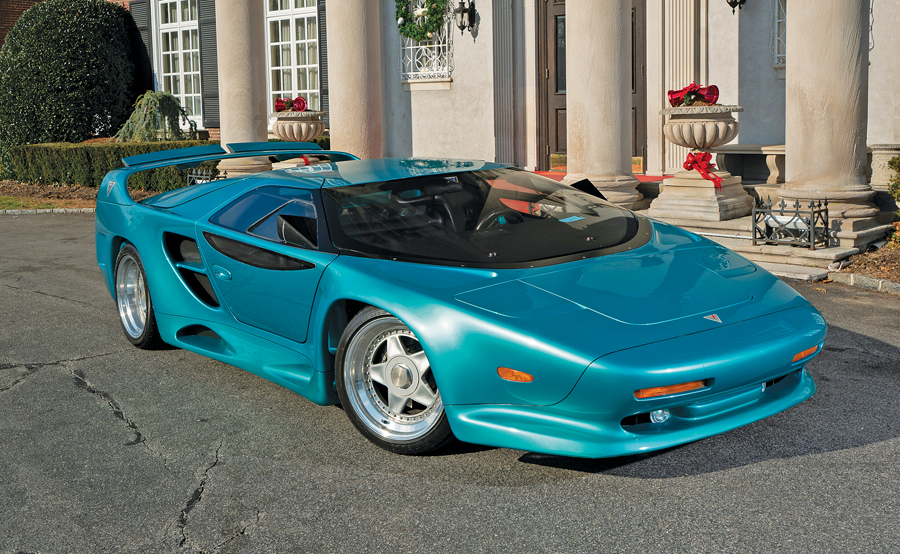- The 1992 and 1993 Geneva Motor Show car
- The only Vector WX-3 coupe prototype produced
- 1,000-hp twin-turbo V8 engine
- Retained by company founder Jerry Wiegert
The Avtech WX-3 prototype was first displayed in silver paint at the 1992 Geneva Motor Show. The WX-3 prototype owed its advanced composition to the Vector W8, including carbon fiber and Kevlar. Inside, the WX-3’s interior was far more refined, but it still shared its airplane-cockpit-control arrangement with the W8.
The hard top eschewed deeply bolstered sports seats in favor of a three-across seating configuration clothed in black leather with teal-green trim. Side windows that slid open helped save weight and reduced complexity, as did triangular mirrors integrated into the A-pillars.
Although it never made production, the WX-3 represented the very best of America’s first supercar and offered enormous potential for the future.
